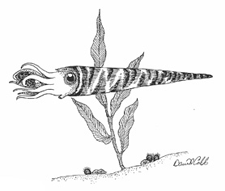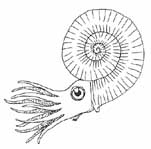Sign up for Lesson Plans, discounts & more!
Nautiloids
Nautiloids are marine creatures classified within the group of animals called cephalopods, which are an advanced group of mollusks that comprise belemnites, ammonoids, and modern celeoids. They have complex, enormous eyes, muscular tentacles, powerful jaws, and unlike modern cephalopods they had shells! All of this group are predators.
Nautiloid Shells
There are over 2,500 nautiloid species identified from the fossils record, though there are few living species. Most extant cephalopods are said to have descended from Paleozoic nautiloids. Nautiloids share three key features that are not in modern cephalopods. These are the parts of the shell, sutures, the siphuncle, and internal chambers. The thin walls that separate the chambers in the shell is known as septa. The siphuncle is a tube that connects all of the chambers.
The nautiloids took calcium carbonate from the seawater to form the shells that protected them from predators and from the crushing pressures of the deep sea. Luckily these shells were easily fossilized, leaving a record of the existance of these wildly successful cephalopods.
When Did Nautiloids Live?
The earliest nautiloids to be identified in the fossil record are from the late Cambrian Period and were found in northeastern China. These ancient forms appeared to have died, leaving but at least one family member. The ellesmeroceratidae survived towards the early Ordovician period, subsequently giving rise to all cephalopods. These aquatic animals Deversified and became widespread throughout the oceans of the world during the Ordovician, Silurian, and Devonian Periods, They had a variety of coiled, straight, or curved shells.
As a group the nautiloids declined towards the end of the Paleozoic Era many of them going extinct at the end of the Permian Period. The ammonites however continued to fluorish throughout the Mesozoic finally becomming extinct along with the dinosaurs at the end of the Cretaceous Period.
Are Nautiloids Extinct?
There are six living species of Nautiloids today. they are separated into two groups the Nautilus and the allonautilus. The ammonites became extinct at the end of the Cretaceous Period.
How Big is a Nautiloid?
Since nautiloids are such a diverse group of marine animals, that have been swimming in the world’s oceans for close to 400 million years, they come in all sizes. Some had long shells that could reach a length of up to fifteen feet. Others could be just a few centimeters. Todays chambered nautilus grows to about 8 inches in diameter.
Unlike the present octopi with eight tentacles, the Nautiloids that lived during the Ordovician period had more, maybe hundreds.
Some common nautiloid fossils are:
- Orthoceras,
- Ammonites,
- Goniatites,
- Bacculites,
- Belemnites
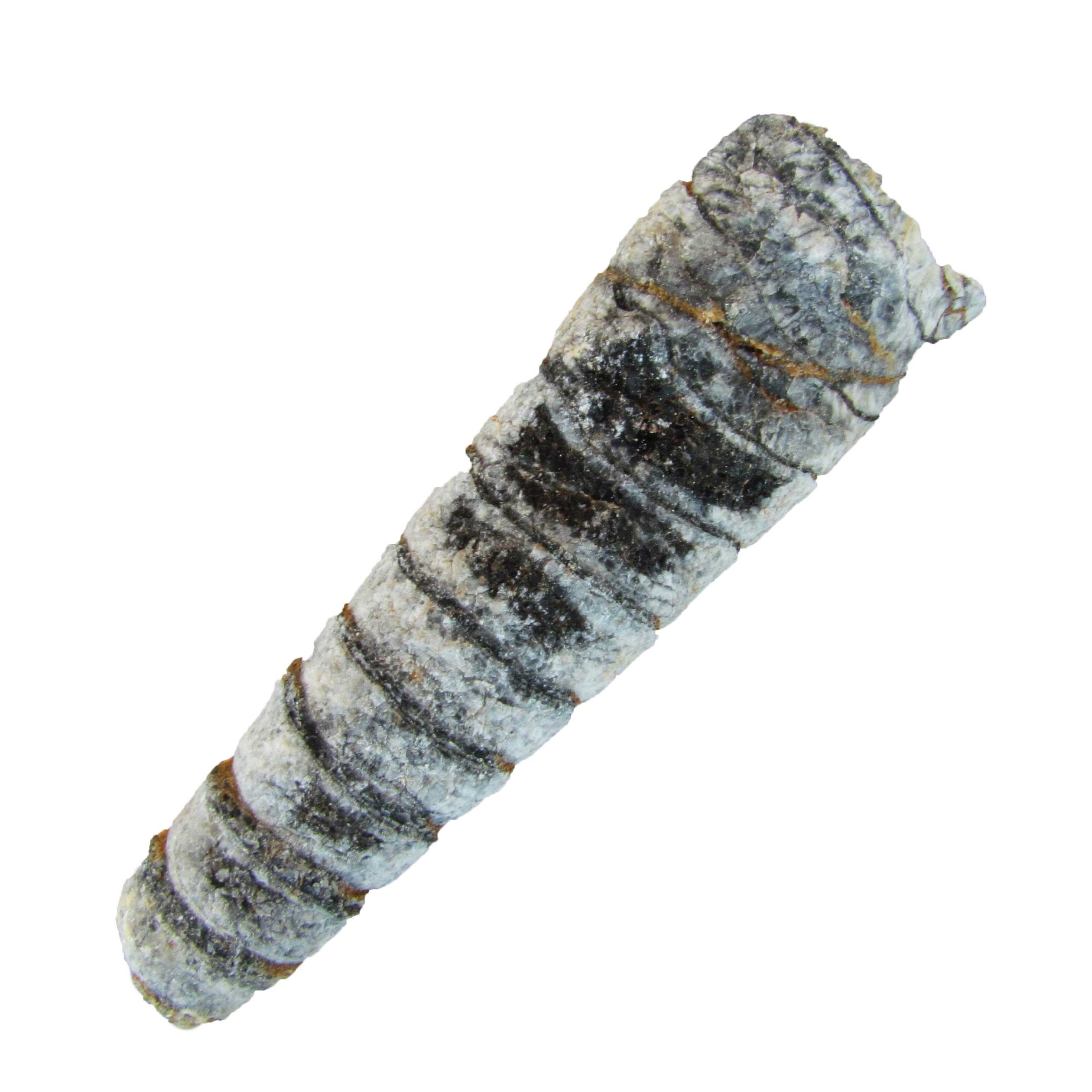
Orthoceras Fossil
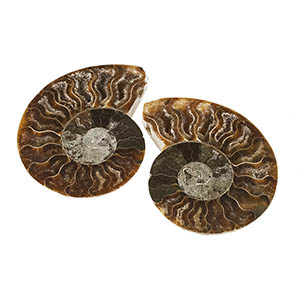
Ammonite Fossil
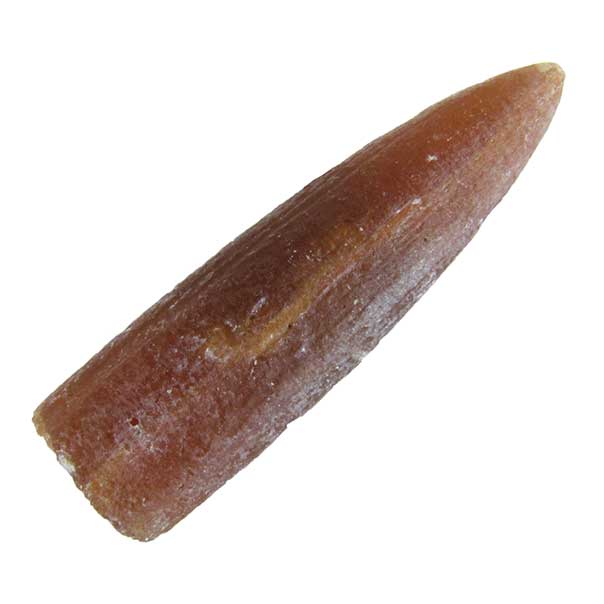
Belemnite Fossil
Check out some of the Educational Materials for sale on our sister site fossilicious.com.

interested in more? If so, you may want to check out our other sites:
fossilicious.com - Our online fossil and mineral rock shop.
rocksandminerals4u.com - An educational site about rocks, minerals, and geology.
Geologic Time Geologic Time Line
Cenozoic Era
Quaternary
Neogene
Paleogene
Mesozoic Era
Cretaceous
Jurassic
Triassic
Paleozoic Era
Permian
Carboniferous
Devonian
Silurian
Ordovician
Cambrian
Archean Time
Hadean Time
Teachers Resources
Activities for Education and Fun
Earth Science Lesson Plans
Activities For Kids
Fossil Lesson Plans
Fossil Activities
Education Articles
Coloring Pages
Dinosaur Coloring Pages
Montessori Materials
Geology Club
Fossil Hunting
 |
 |
 |
